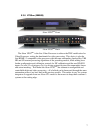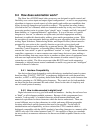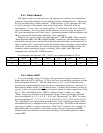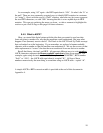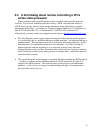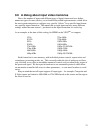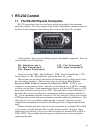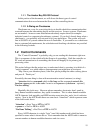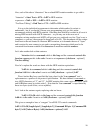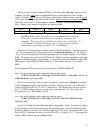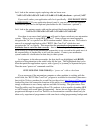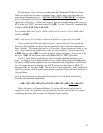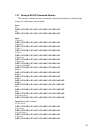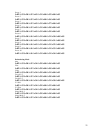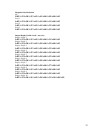1.1.1 The Anchor Bay RS-232 Protocol
In this portion of the document, we will discus the three types of control
communications that occur between the iScan and the controlling device.
1.1.2 A Dialog on Checksums
Checksums are a way for a receiving device to double check the communication that
occurred between the transmitting device and the receiver. In most systems, Checksums
are not needed – however some installations absolutely require them (for example:
industrial control or corporate teleconference systems). If you don’t already know what a
checksum is - you probably will not need it for your application. The system will work
fine in 99.999% of systems without the use of checksums. If you need to use a checksum
due to customer/job requirements, the calculation and checking calculations are provided
in the following sections.
1.2 Control Commands
The “Control Command” is probably why you are reading this document right now.
This is a sequence of data which tells the iScan to do something. Until the controller or
PC sends an instruction to do something, the iScan will happily do its primary job –
processing video.
This writer believes that the easiest way to understand what is occurring is to think of a
“serial command” as a public address announcement you might hear in an airport:
“May I have your attention please, John Doe, please pickup the white courtesy phone
and press 0. Thank you.”
Essentially the same thing is done with an automation control sentence (or string):
“Attention this is a command which is this long and the command controls this
function >>pause<< this is the value I want to set >>pause<< [checksum – optional]
I’m done talking”
Hopefully this looks easy. However please remember, electronics don’t speak in
fancy human readable sentences, they speak in numbers. This is where human-readable
ASCII character look-up-tables and HEX notation come into play, and a lot of confusion
can too. Now in the ASCII table there are some basic “characters” which represent some
of the bold words above:
“Attention” = Start Text or STX in ASCII
>>pause<< = Null or NUL in ASCII
“I’m Done Talking” = End Text or ETX in ASCII
Every ASCII character is a single “byte” (one 8-bit number each) which has been
specified to mean what is shown above. Now remember that the ASCII table is meant to
convert numbers to human readable characters and vise versa.
15



